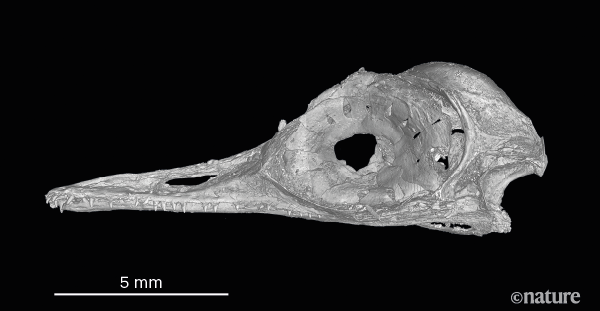Remarkable Tiny Dinosaur Discovery Coincides with British Science Week
Everything Dinosaur marks British Science Week 2020 by reporting on the remarkable discovery of a tiny fossilised skull preserved in amber from northern Myanmar (Burma). The fossil skull, which measures just 14 millimetres long represents a new species within the clade Dinosauria. It has been named Oculudentavis khaungraae it probably weighed about as much as the smallest living bird, the Bee Hummingbird. Scientists have estimated that it was around 8-10 centimetres long. This makes Oculudentavis the smallest dinosaur known to science.
The Tiny Skull of the Newly Described Oculudentavis khaungraae Preserved in Amber from Myanmar
Picture credit: Lida Xing et al
Oculudentavis khaungraae
Team members at Everything Dinosaur have compared Oculudentavis to Tyrannosaurus rex (a distant relative of this tiny creature). They estimate that an adult Tyrannosaurus rex weighed around 3.5 million times heavier. Ironically, the tiny teeth in the jaw of Oculudentavis suggest that just like T. rex it was a predator. It probably hunted insects. The fossil is estimated to be around 99 million years old.
The fossil discovery represents the smallest member of the Mesozoic Dinosauria clade known to science and it demonstrates the importance of amber as a means of permitting scientists to gain an insight into the ecology of an ancient habitat thanks to the preservation of small animals and other material in fossilised tree resin.
Specimens preserved in amber are emerging as an exceptional way to study very small animals that once lived alongside the generally much larger pterosaurs and dinosaurs.
What an amazing fossil discovery, the publication of the scientific paper having coincided with British Science Week.
Note
The conclusions of the scientific paper have been challenged, this fossil might represent the preserved remains of a lizard.
The Everything Dinosaur website: Everything Dinosaur.


